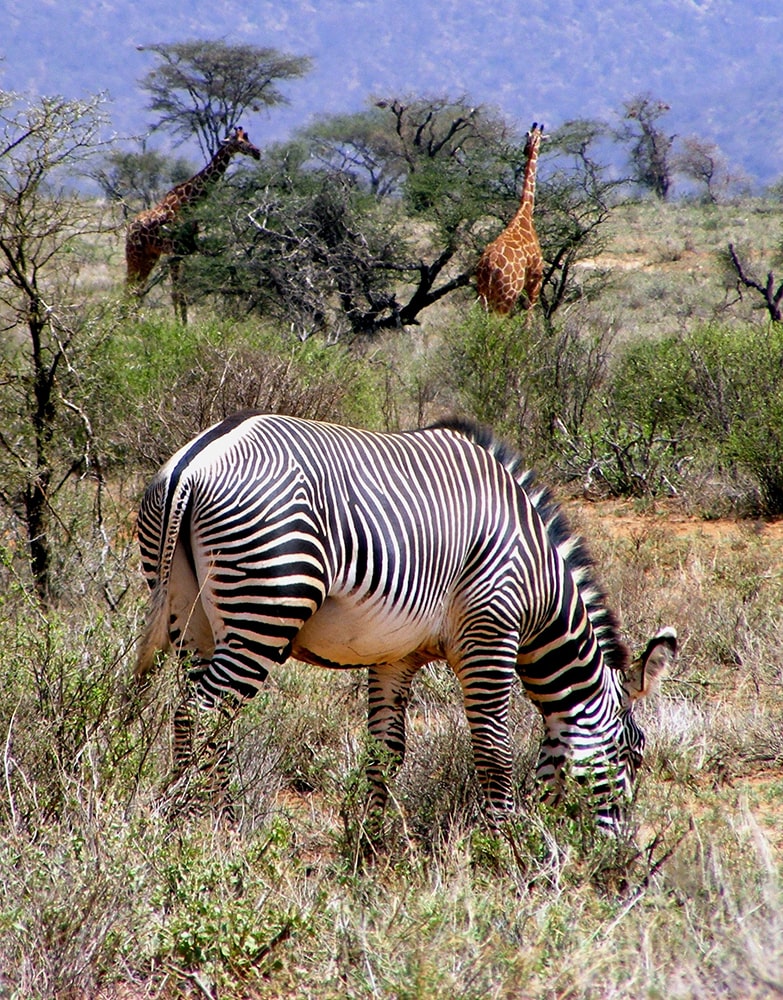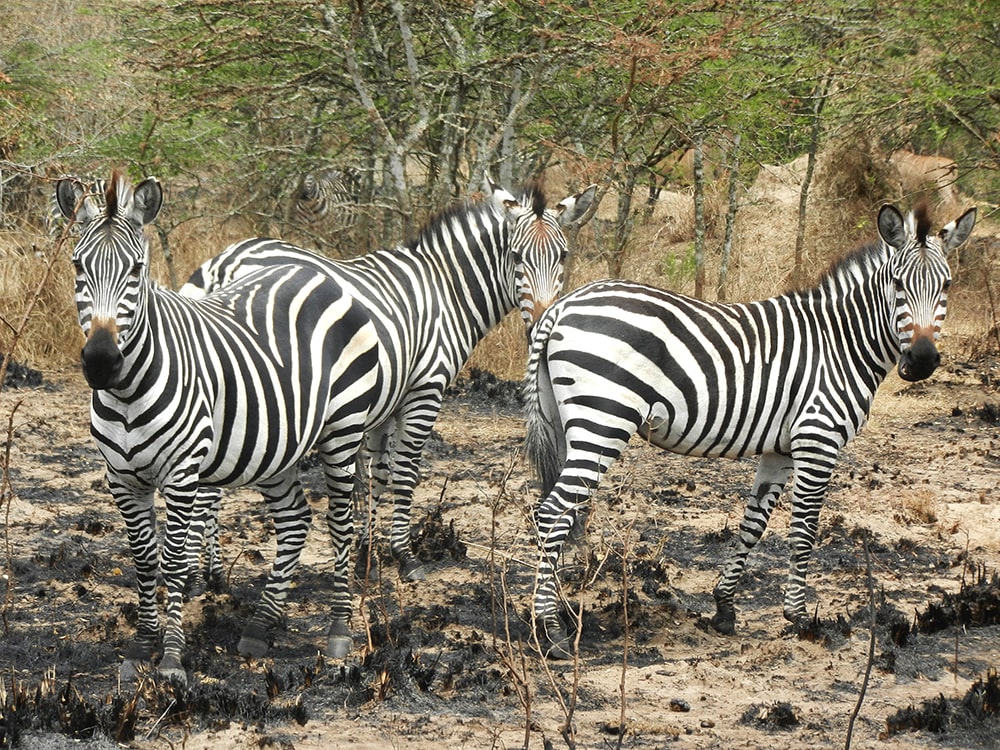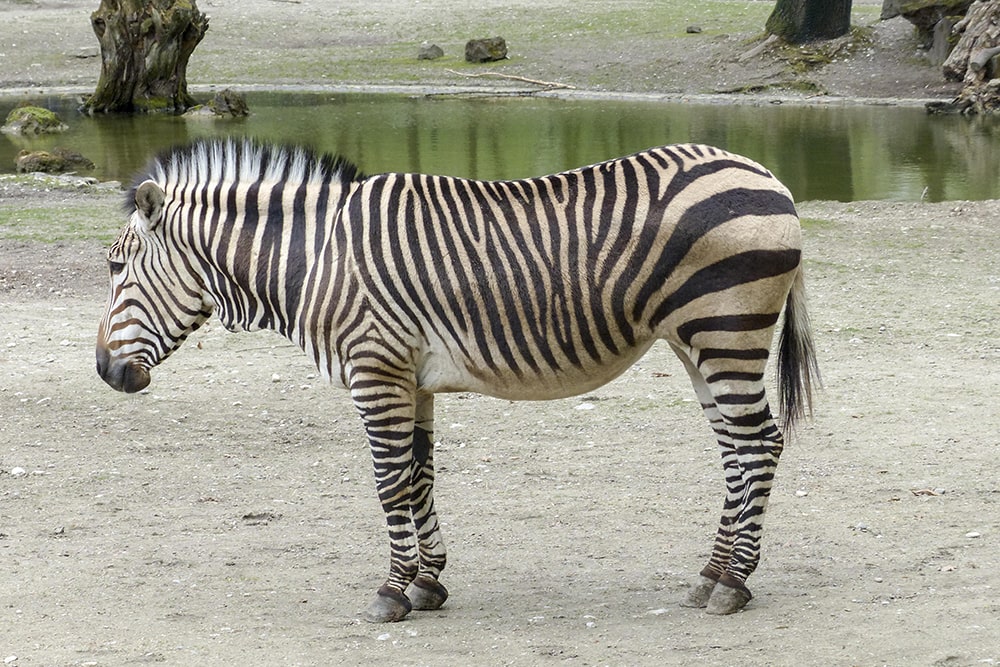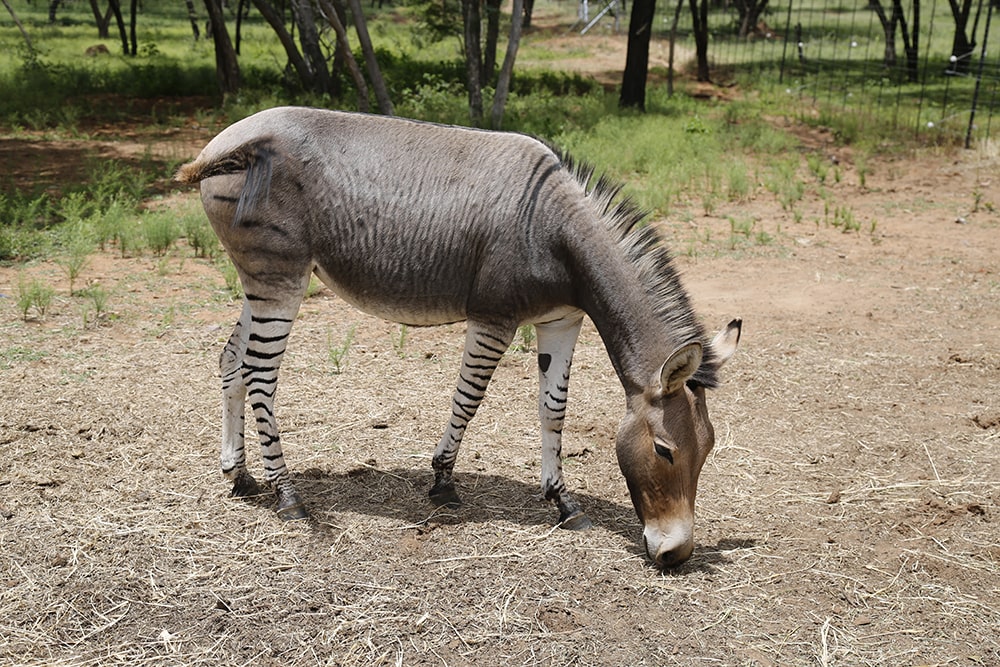What an emblematic animal? Who doesn’t know about the zebra with its black and white stripes? Because of its resemblance to horses, the zebra is also described as a striped horse!
The zebra belongs to the Equidae family, which includes the horse, the donkey, and the wild ass. As opposed to horses and mules, the zebras cannot be domesticated.
I have outlined in this post some amazing facts about zebras. I also addressed the lingering questions about the legendary zebra stripes and their usefulness, if any, except perhaps for the fashion industry!
Where Do Zebras Live?
First off, there are three species of zebras:
- Plains zebra or Burchell’s zebra: Named after the British explorer William John Burchell.
- Grévy’s zebra: Given the name of the president of France, Jules Grévy (1882), who received one as a gift.
- Mountain zebra.
The Burchell’s zebra dwells mostly in Ethiopia, Angola, and South Africa. The Grévy’s zebra lives in northern Kenya. Finally, the mountain zebra inhabits Namibia and South Africa.
The mountain zebra and the Grévy’s zebra are endangered species. Their numbers in the wild are around 2,500 for each species.

Quick Facts
- Height: Burchell’s (3.8-4.6 ft) / Grévy’s (4.2-5 ft).
- Weight: Burchell’s (485 to 500 pounds) / Grévy’s (770 to 990 lbs).
- Lifespan: 25 years in the wild and 40 years in captivity.
- Habitat: Savannas, grasslands, and woodlands.
- Diet: Herbivore, but also eat twigs, leaves, bark, and shrubs.
- Gestation Period: Burchell’s (12 months) / Grévy’s (13 months).
- Predators: Lions, hyenas, wild dogs, leopards, and cheetahs.
- Zebras have excellent eyesight, hearing, and sense of smell.
Another interesting fact about the zebra is that it can see colors except for orange!
Did you know that zebras are also featured on the coat of arms for Botswana?
The zebras are very social animals and live in small groups called a harem. These groups include a male called the stallion and up to 6 females and their foals.
Several harems can merge to form a herd. As a matter of fact, numerous herds of zebras travel from the Serengeti Plains to the Mara Reverse during the wildebeest migration.
The female zebra gives birth to 1 foal and spends the first 2-3 days after birth alone with her foal. This time spent alone with each other allows the foal to get acquainted with its mother’s voice, smell, and appearance. The foal can walk 15 min after birth and starts running after an hour.
Strength in Numbers
Zebras run in a zig-zag pattern from side to side, making it tough for a predator to attack. Moreover, the zebras have high endurance; hence, they can outrun their predators.
When cornered, the zebras will get into a defensive mode, kicking and biting their predators. Their kicks can kill a lion!
The zebras stand up and only sleep while in groups, where one of the zebras stays awake and is looking for predators.

The zebras have four gaits: walk, trot, canter, and gallop. They can reach a maximum speed of 35 mph (65 km/h), which is slower than horses. However, since zebras are single-toe hoofed animals, they can run fast on hard surfaces.
Communication
Zebras communicate with one another through high-pitched snorting, barking, and whinnying.
Moreover, zebras also communicate with their ears! A zebra’s ear can move in almost any direction. The position of the ears is an indication of the zebra’s mood! For instance, when a zebra is angry, its ears will be pulled backward. On the other hand, if the zebra is scared, its ears will be pushed forward.
Who Painted the Stripes?
Now here is a conundrum, is the zebra white with black stripes or black with white stripes? Well, the zebra skin is black, and the white stripes are add-ons.
Alternatively, I have a more picturesque story for you coming from the African folk tale repertoire which explains how the zebras got their stripes! It goes as follows: once upon a time, a baboon fought with a zebra (white coat) for a water hole. During the quarrel, the zebra kicked the baboon, lost his balance, and fell into a nearby fire. Thus, the zebra ended up with scorch marks and consequently with black stripes!
The stripes are vertical over the head, the neck, and the body, whereas they are horizontal over the legs. The Grévy’s zebra has the most stripes and a white underbelly, while for the Burchell’s zebra, the strips cover its belly and are wider.
Stripes are to zebras what fingerprints are to humans. In other words, a means of identification. The striping pattern is unique to each zebra.

Are the Stripes Merely a Fashion Statement?
Here are some of the theories put forward by researchers, which state at least three purposes for the stripes:
- Camouflage: Many believe the striping pattern helps the zebra hide from predators. How? When the zebras wander in grasslands, their predators, such as the lions and the hyenas, are unable to spot them in the grass since they are color-blind! The stripes provide the perfect disguise!
- Bug Repellent: The presence of strips is a deterrent for horseflies and the tsetse flies. The polarized light is what attracts flies. The striping pattern over the zebra skin seems to disrupt the polarized light. Thus, making this striped horse unattractive to flies!
- Cooling System: In recent years, many researchers have shown that the stripes help dissipate over 70% of the heat. Hence, the striped horses can stay chill under the scorching African sun!
Mix and Match: Crossbreeding between Relatives!
There is no interbreeding within the zebra species. However, crossbreeding between the zebras and other members of the Equidae family has been reported.
- Zonkey: Crossbreeding between a male zebra and a female donkey.
- Zedonk: Progeny from a cross between a male donkey and a female zebra.
- Zorse: Crossbreeding between a stallion zebra and a female horse.

The animals resulting from mating different Equidae family members are sterile and cannot produce offspring.
Conclusion
The zebras are more than just striped horses! The most prominent zebra species in numbers is the Burchell’s zebra (Plains zebra).
Besides being an inspiration for the fashion industry, the zebra’s stripes serve many purposes! They offer a great disguise all year round against predators, keep the bugs away, and help control the zebra’s body temperature!
Finally, if you want to observe the zebras in their natural habitat, the destination of choice is by far Kenya! However, before booking your next Kenyan adventure to visit the striped horses, click here to read my full review about a Kenya Active Safari.
If you have any questions about the zebras, please drop me a line below. I will get back to you.
Hi Sonia,
Learned a lot more about Zebras, very enlightening, your site is very impressive and makes me feel even more I would love to visit and see the animals in their natural habitats.
It is so sad that many of these fine animals are becoming,”risk,” species. Let us hope that “homo sapiens” will eventually realize the folly of their ways before it is too late.
Angieina
Thanks for stopping by. I am glad that you enjoyed reading about zebras.
Hi Sonia …
I’m always interested in the folklore about animals and how they came to be.
A ton of information about these very distinct animals. Great blog… Keep ‘um coming!
Paul
I love folklore tales as well! So when I saw that story about how the zebras got their stripes, I couldn’t resist, I had to share it!
Thanks.
I never knew there was so much to know about zebras.
I like your picture of the three zebras at the lake. They make you dizzy with their stripes. Maybe that’s another reason why the flies stay away from them.
Your video is also another interesting touch. It is kind of like a tong twister with all the different names for the off breeds.
I love reading about all the different species of zebras and learning about all the ways the stripes help with keeping them cool and keeping the flies away.
Fantastic post.
Thanks,
Keith
I am glad that you found value in reading my post about these amazing creatures that are the zebras. I hope that you will use the knowledge you acquired about the zebras to impress your friends and family at your next gathering!
Thanks.